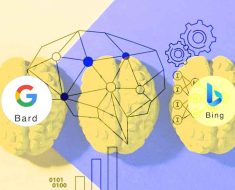Unlocking Business Success: A comprehensive guide to building a recommendation system using ML
In the ever-expanding digital landscape, companies are witnessing an unprecedented surge in global customer data generation. To harness the full potential of this data and provide a personalized user experience, businesses are increasingly turning to machine learning. One of the transformative applications of Recommendation System Using ML, which has proven to be instrumental in increasing user engagement, retention, and ultimately driving substantial sales. This article explores recommendation systems in detail and offers a step-by-step guide to building an effective system using machine learning.
The Impact of Recommendation Systems:
The influence of recommendation systems on business revenue is exemplified by industry giants like Netflix and Amazon. In 2021, Netflix reported a staggering US$1 billion increase in revenue per year attributed to its recommendation system. Similarly, Amazon witnessed a 35% boost in sales, underscoring the significant impact personalized recommendations can have on consumer behavior.
Understanding Recommendation Systems:
A recommendation system is an algorithmic approach that utilizes data analysis and machine learning techniques to suggest relevant content, such as movies, videos, or products, to users based on their preferences and past behavior. These systems employ various machine learning algorithms, including clustering, collaborative filtering, and deep neural networks, to generate personalized recommendations.
Prominent examples of recommendation systems include Netflix, Amazon, and Spotify. Netflix tailors movie suggestions, Amazon recommends products based on past purchases and browsing history, and Spotify curates personalized playlists and song suggestions, all contributing to a more engaging user experience.
Building a Recommendation System: A Step-by-Step Guide:
Problem Identification & Goal Formulation:
The journey begins with clearly defining the problem the recommendation system aims to solve. Whether its suggesting products based on past purchases or movies based on viewing history, a well-defined goal guides subsequent steps, including data collection and model selection.
Data Collection & Preprocessing:
Collecting data on customer behaviour, such as past purchases, browsing history, reviews, and ratings, is pivotal. Platforms like Apache Hadoop and Apache Spark facilitate the processing of large datasets. Data engineers then preprocess and analyze this data, involving tasks like cleaning, deduplication, and handling missing values.
Exploratory Data Analysis:
Exploratory Data Analysis (EDA) helps unveil data distributions and relationships between variables. Visualization tools like Matplotlib, Seaborn, and Pandas Profiling assist in gaining insights. For example, understanding which items are frequently sold together or visualizing popular products aids in refining recommendations.
Feature Engineering:
Selecting relevant features to train the machine learning model is crucial. Feature engineering involves creating new features or transforming existing ones to enhance model accuracy. For a recommendation system, factors like product ratings, purchase frequency, and customer demographics are key.
Model Selection:
Choosing the appropriate machine learning algorithm is fundamental to accurate predictions. Collaborative filtering, content-based filtering, and hybrid filtering are common approaches. Collaborative filtering assumes users with similar preferences will buy similar products, content-based filtering analyzes product attributes.
Model Training:
Data is divided into training and testing sets, and the chosen algorithm is employed to train the recommender model. Matrix Factorization, Deep Learning, and Association Rule Mining are popular training algorithms.
Hyperparameter Tuning:
Optimizing the recommender system’s performance involves tuning hyperparameters such as learning rate and regularization strength. A meticulous testing process identifies the combination yielding the best performance.
Model Evaluation:
Evaluation metrics like precision, recall, and F1 score gauge the accuracy and effectiveness of the recommendation system. Rigorous evaluation ensures the system aligns with business goals and user expectations.
Model Deployment:
Once developed and evaluated, the final step is deploying the recommendation system in a production environment, making it accessible to users. Cloud-based platforms like AWS, Microsoft Azure, and Google Cloud provide scalable infrastructure.








